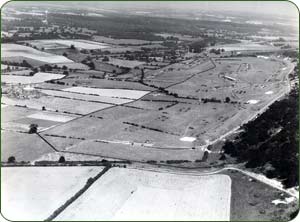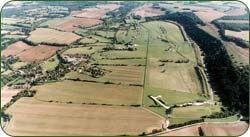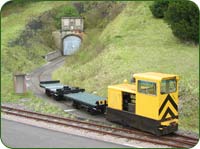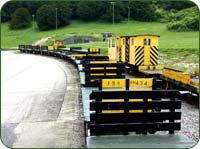History of Dean Hill Park, Salisbury

|
| Dean Hill Park 1944 (Click to enlarge) |
The Royal Naval Armaments Depot Dean Hill began life in 1938 as Britain prepared itself against the threat of war with Germany. The Ministry of Defence requisitioned more than 500 acres of farmland on the edge of the villages of East Dean and West Dean near Salisbury to build a centre to store heavy weapons for the Navy fleet based at Portsmouth. Over three years, bands of Irish miners and Scottish fitters, aided by local labourers, hewed vast bunkers into the chalk hillside and built dozens of sturdy brick and concrete workshops, laboratories and offices across the site.
The MoD opened up a rail link running behind East Dean’s ancient church to bring weapons in and out of the site and the depot was opened in 1941. After the end of World War II, the Dean Hill depot continued to process and store the Royal Navy’s conventional weapons and provided overflow storage for more sophisticated weapons for RNAD Gosport. In 1994, the MoD closed the rail link and thereafter weapons were moved in and out of the site by road.

|
| Dean Hill Park in 2000 (Click to enlarge) |
In 1999, the depot began storing and processing weapons for all three military services and it was renamed Defence Munitions Dean Hill. Then in 2001, following a review by the Defence Munitions Rationalisation Study Team, the government concluded that Dean Hill was surplus to long term requirements and, in early 2002, the government announced that it would close. Explosives from the site were transferred to other military storage depots and RNAD Dean Hill closed on March 31st 2004.
The Ministry of Defence sold most of the Dean Hill site, along with the bunkers and buildings, to Harving Ltd, a company that specializes in bringing redundant rural buildings into use to help generate employment in the countryside. The new owners renamed the site Dean Hill Park and began the process of demilitarisation, converting buildings for civilian use, removing hundreds of signposts and other military hardware and returning most of the 385 acre site to conservation and agricultural management.
Dean Hill Park - The Railway

|
|
Dean Hill Park Railway (Click to enlarge) |
As the Royal Naval Armaments Depot (RNAD), Dean Hill had its own internal narrow gauge railway, which could transport munitions right into almost every building on site as well as into the underground bunkers where the weapons were stored.
The heaviest armaments came to the site on the national rail network and into Dean Hill's own sidings at East Dean. Here, between high blast banks to protect the neighbours from explosions, the munitions were transferred onto rolling stock, which operated on the special RNAD 2'6" gauge railway.
In the early 1990s, the MoD took the decision to close the link with the national rail network and thereafter all of the munitions arrived and left Dean Hill by road. But the yellow Baguley Drewry and Hunslett locomotives were still used inside the site and, until the Dean Hill munitions depot closed in 2004, the sight and sound of them trundling across Dean Hill drawing wagons loaded with munitions remained part of the local scenery.

|
|
Dean Hill Park Railway (Click to enlarge) |
In 2006, when Harving Ltd took over Dean Hill Park, it also acquired the narrow-gauge track, extending to some 7 km, as well as two Baguley Drewry diesel 60hp locomotives, two brake vans and a number of railway wagons.
But, having assessed the costs involved in maintaining the rail track and rolling stock, Harving has reluctantly decided that it should be removed and sold. Most of the track has already been lifted, leaving the railway formation, which will provide tracks for pedestrians and vehicles around the site as well as preserving important environmental habitats.